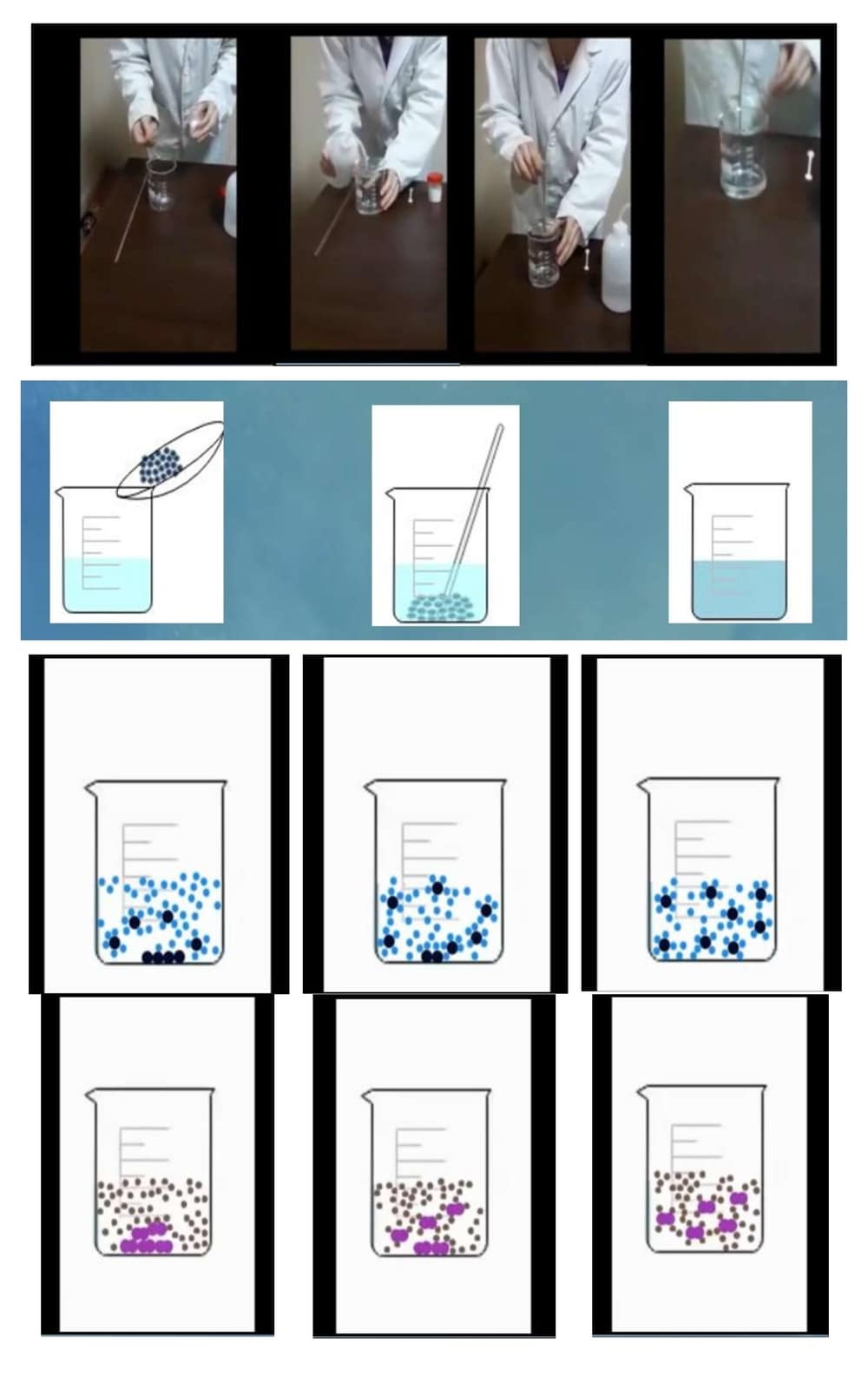Internet pages for asynchronous online and face-to-face learning about solutions and dissolution Scientific paper
Main Article Content
Abstract
In the last decades online communication has become an important part of the realization of the educational process. In the conditions caused by the Covid-19 pandemic it has become particularly significant since in most cases it was necessary to switch to some forms of online teaching-learning. This paper presents the results of a research study conducted as a pedagogical experiment with parallel groups. The aim of this research study was to compare the effects of the application of internet pages for independent online asynchronous learning outside the school environment (group A) and face-to-face learning realized by a teacher at school (group B). The content of the internet pages was created in order to enable the acquisition of the concepts of solutions and dissolution. The effects of the approaches applied were studied based on the student achievement in a post-test (immediately upon learning about the concepts of solutions and dissolution) and in a delayed post-test (a year after the acquisition of these concepts). The participants in this research study were 187 primary school students, who participated in the pedagogical experiment when they were in the seventh grade, while they were in the eighth grade when they did the delayed post-test. The results showed that there was not a statistically significant difference between the overall achievements of the students who learnt about the concepts of solutions and dissolution by independent asynchronous online learning and face-to-face learning at school. This implies that the similar results can be achieved with asynchronous online learning as with face-to-face learning when the conditions do not allow school-based eduion.
Downloads
Metrics
Article Details

This work is licensed under a Creative Commons Attribution-NonCommercial-NoDerivatives 4.0 International License.

Authors retain copyright and grant the journal right of first publication with the work simultaneously licensed under a Creative Commons Attribution license 4.0 that allows others to share the work with an acknowledgement of the work's authorship and initial publication in this journal.
Funding data
-
Ministarstvo Prosvete, Nauke i Tehnološkog Razvoja
Grant numbers 451-03-9/2021-14/ 200168
References
M. W. Lee, J. Chem. Educ. 97 (2020) 2834 (https://doi.org/10.1021/acs.jchemed.0c00881)
F. J. de O. Araújo, L.S. A. de Lima, P. I. M Cidade, C. B. Nobre, M. L. R. Neto, Psychiatry Res. 288 (2020) 112977 (https://doi.org/10.1016/j.psychres.2020.112977)
B. O’Rourke, U. Stickler, Lang. Learn. High. Educ. 7 (2017) 1 (https://doi.org/10.1515/cercles-2017-0009)
N. S. Chen, H. C. Ko, Kinshuk, T. Lin, Innov. Educ. Teach. Int. 42 (2005) 181 (https://doi.org/10.1080/14703290500062599)
S. Hrastinski, Educause Quarterly 31 (2008) 51 (https://er.educause.edu/-/media/files/article-downloads/eqm0848.pdf)
M. D. Casselman, K. Atit, G. Henbest, C. Guregyan, K. Mortezaei, J. F. Eichler, J. Chem. Educ. 97 (2020) 27 (https://doi.org/10.1021/acs.jchemed.9b00767)
C. E. McCusker, R. Mohseni, J. Chem. Educ. 97 (2020) 2913 (https://doi.org/10.1021/acs.jchemed.0c00743)
P. Ginns, Learn. Inst. 15 (2005) 313 (https://doi.org/10.1016/j.learninstruc.2005.07.001)
R. E. Mayer, C. Pilegard, in The Cambridge Handbook of Multimedia Learning, R. Mayer, Ed., Cambridge University Press, Cambridge, 2014, p. 316 (https://doi.org/10.1017/CBO9781139547369.016)
J. H. W. Van der Molen, T. H. A. Van der Voort, Hum.Commun. Res. 26 (2000) 3 (https://doi.org/10.1111/j.1468-2958.2000.tb00747.x)
S. Alley, C. Jennings, N. Persaud, R.C. Plotnikoff, M. Horsley, C. Vandelanotte, Fron. Public Health 2 (2014) 13 (https://doi.org/10.3389/fpubh.2014.00013)
P. A. Chandler, Learn. Instr. 14 (2004) 353 (https://doi.org/10.1016/j.learninstruc.2004.06.009)
R. E. Mayer, P. Chandler, J. Educ. Psychol. 93 (2001) 390 (https://doi.org/10.1037/0022-0663.93.2.390)
J. Rose, R. Pennington, D. Behmke, D. Kerven, R. Lutz, J. E. B. Paredes, J. Chem. Educ. 96 (2019) 2632 (https://doi.org/10.1021/acs.jchemed.9b00234)
J. Paul, F.A. Jefferson, Front. Comput. Sci. 1 (2019) 7 (https://doi.org/10.3389/fcomp.2019.00007)
M. D. Dixson, JoSoTL 10 (2010) 1 (https://files.eric.ed.gov/fulltext/EJ890707.pdf)
M. E. Villanueva, E. Camilli, A. C. Chirillano, J. A. Cufré, M. C. de Landeta, L. N. Rigacci, V. M. Velazco, A. F. Pighin, J. Chem. Educ. 97 (2020) 2719 (https://doi.org/10.1021/acs.jchemed.0c00664)
M. Shapiro, D. M. Solano, J. J. Bergkamp, A. Gebauer, E. Gillian, K. M. Lopez, H. Santoke, L. E. Talbert, J. Chem. Educ. 97 (2020) 2526 (https://doi.org/10.1021/acs.jchemed.0c00788)
M. M. Cooper, L. M. Corley, S. M. Underwood, J. Res. Sci. Teach. 50 (2013) 699 (https://doi.org/10.1002/tea.21093)
H. T. Nennig, K. L. Ida´rraga, L. D. Salzer, A. Bleske-Rechek, R. M. Theisen, Chem. Educ. Res. Pract. 21 (2020) 168 (https://doi.org/10.1039/C9RP00112C)
E. K. Faulconer, J. C. Griffith, B. L. Wood, S. Acharyya, D. L. Roberts, Chem. Educ. Res. Pract. 19 (2018) 392 (https://doi.org/10.1039/C7RP00173H)
R. Mayer, in The Cambridge Handbook of Multimedia Learning, R. Mayer, Ed., Cambridge University Press, Cambridge, 2014, p. 43 (https://doi.org/10.1017/CBO9781139547369)
A. Berg, D. Orraryd, A. Jahic Pettersson, M. Hulten, Chem. Educ. Res. Pract. 20 (2019) 710 (https://doi.org/10.1039/C8RP00288F).





